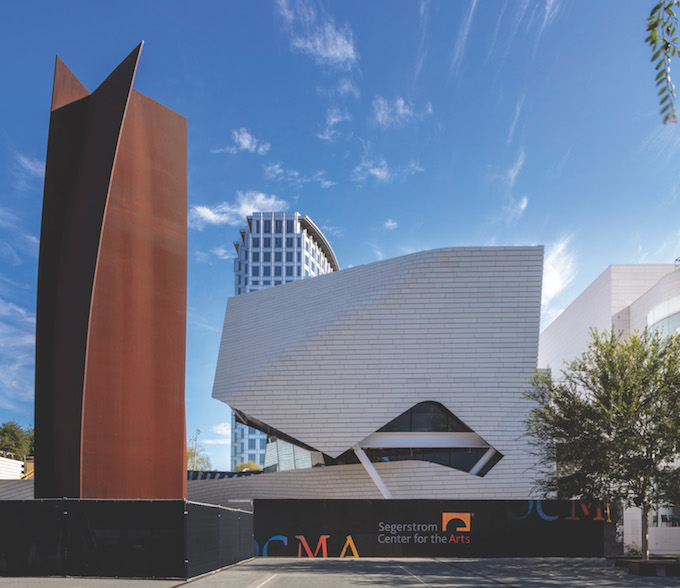
Orange County Museum of Art prepares to reopen this fall in its brand-new home at Segerstrom Center for the Arts.
By Sharon Stello
After being closed for more than two years, the Orange County Museum of Art is poised to finally reopen this fall in a brand-new building at Segerstrom Center for the Arts in Costa Mesa. Designed by Pritzker Architecture Prize-winner Thom Mayne of Morphosis, the structure is considered the final piece in the buildout of this arts campus, which already includes three theaters, a concert hall, ballet school and more.
“I think the proximity of visual and performing arts within steps of each other is unprecedented in the U.S. and almost anywhere in the world,” says OCMA Director and CEO Heidi Zuckerman. Previously the director of Aspen Art Museum, Zuckerman came to lead the Orange County museum during its pandemic-era closure and has been patiently waiting for the new building to open.
“The idea of being able to bring an incredible cultural experience to this community is such a privilege and an honor,” she says.
Admission will be free for the first decade, thanks to a generous donation from Newport Beach-based Lugano Diamonds. And a 24-hour grand opening is set for Oct. 8 starting at 5 p.m. with art workshops, film screenings, performances by the Pacific Chorale and more. In the coming months—with some programs not starting until early next year—the museum will begin to regularly host artist lectures and panel discussions, school tours and camps for kids, art-making sessions for adults and yoga on the roof deck as well as film and music presentations.
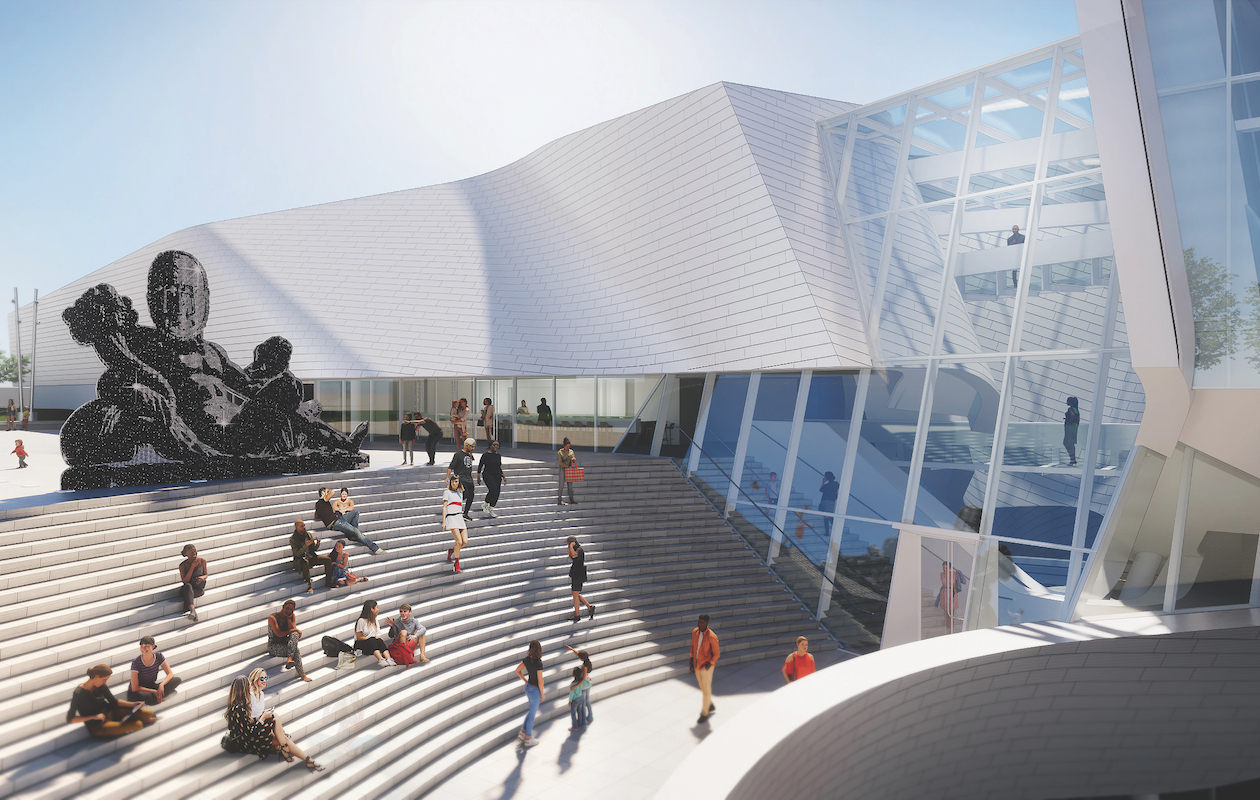
The 53,000-square-foot building doubles the size of the museum’s former location in Newport—the city where this institution began 60 years ago, in 1962, first as the Balboa Pavilion Gallery and then the Newport Harbor Art Museum before assuming its current moniker, OCMA. From fall 2018 until closing due to the pandemic in 2020, the museum was housed in a temporary location at South Coast Plaza Village in Santa Ana.
With more than 4,500 works in its collection—including 80 (surpassing its goal of 60) added in honor of its anniversary this year—OCMA focuses on modern and contemporary pieces mostly by artists living in California. The institution has aimed to present and preserve groundbreaking artwork created in the Golden State with major holdings representing early and mid-century modernism, Bay Area figuration, assemblage, the California light and space movement, pop art, minimalism and installation art.
Modern Museum
Looking across the front of the museum, its profile undulates in a seemingly continuous—but perhaps more modern—set of curves from the Reneé and Henry Segerstrom Concert Hall next door. OCMA’s facade is covered with white terra cotta tiles, each weighing 70 pounds and requiring two people to install in the specific place it was crafted to fit.
“One of the things that’s cool about the terra cotta is that it’s outside, then it’s inside and then it comes back outside again,” Zuckerman says, adding that, on one of the upper levels, “you get up close and personal with the terra cotta—you can touch it.”
Among the building’s iconic elements are these tiles and two cantilevers, including one that houses the educational pavilion and another that serves as a planter on the rooftop terrace and the end of a “window gallery” that juts out from the main structure. A grand staircase that winds through the building is fashioned after the steps of The Metropolitan Museum of Art in New York City. Those who don’t take the stairs can ride up in an elevator or choose the translucent walkways. Large windows let in plenty of light. And the landscaping takes an eco-friendly approach: Several living walls feature plants growing on the building’s exterior, and rainwater falling into the cracks between terrace tiles is captured to irrigate the California live oaks and palo verde trees.
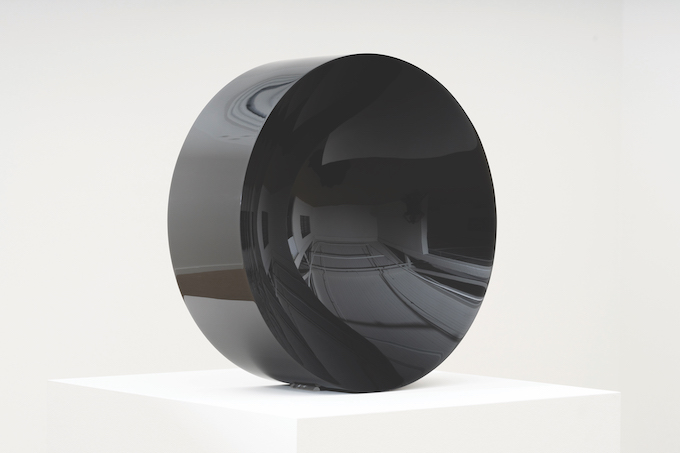
“I think that our overall goal is really to build the museum of the 21st century or the museum of the future,” Zuckerman says. “… And a big part of that is to make people feel welcome. We’re doing that not just through the free general admission, but also through the way we’re thinking about programming.”
Zuckerman explains that all of OCMA’s exhibitions fall into at least one of three categories. “One is this idea of looking back to look forward,” she says. “And so, I think it’s really important to acknowledge where we’ve been as a culture, as an institution, but also as people, and where are we now? And then, where do we hope to go?
“… The second is this notion of space and place and really acknowledging that Orange County is a specific place,” she says. “… It’s about the weather, it’s about the quality of light, it’s about the ease and grace of the people who live here. And I think Orange County is a really innovative place … where people basically built something out of nothing. … So I think it’s really right for contemporary art—the art of our time. Because that’s basically what artists do is create something out of nothing.”
And the third category is the concept of sharing and caring. “Empathy is really important for me and something we started exploring in Aspen, whether we could kind of create this center for empathy at the museum, and using works of art as a way of getting people to think about things or people that they might not otherwise have any connection to—in a nondidactic way, just creating the possibility for those conversations,” she says.
Looking Back, Looking Forward
The museum will open with five exhibits that draw from the past while also examining the influence of these artists, works and ideas on the present day and possibly the future.
The first one, “13 Women,” Zuckerman curated as a nod to the visionary women who founded the museum, then called Balboa Pavilion Gallery. It’s not about those 13 women, but it’s about the idea of the power and influence that women can have when they come together, she explains. The diverse works, ranging from older pieces in the collection to new ones created for this exhibit, will rotate to showcase up to 100 mostly female artists—some living, some deceased—over the course of a year, through Oct. 1, 2023.
Another exhibit, “California Biennial 2022,” is on display through Jan. 2 and highlights emerging and underrepresented California artists who have gone on to shape the region’s artistic landscape. This show revives the museum’s signature exhibition, “California Biennial,” which debuted in 1984 and defined OCMA’s spirit for years. “It’s a really important part of our institutional history, so it was important to me that we look back at that and we update it,” Zuckerman says. She invited back Elizabeth Armstrong, one of OCMA’s former chief curators, to curate the show along with Essence Harden, visual arts curator at the California African American Museum, and Gilbert Vicario, chief curator at the Phoenix Art Museum. New this time around, the biennial also explores the intersection of art, craft, social activism and marginalized histories.
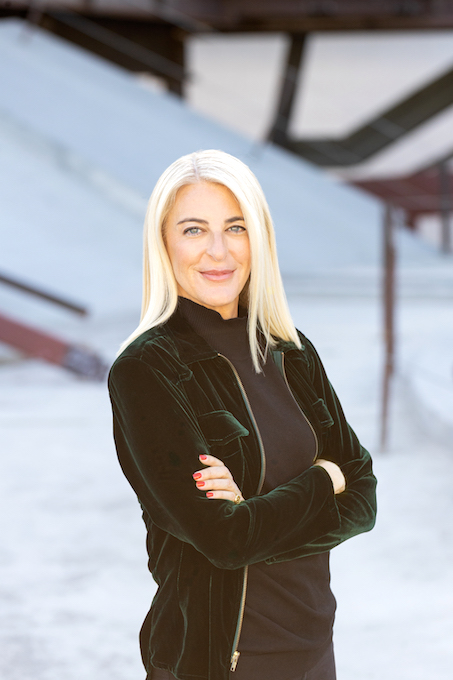
On the museum’s mezzanine, the “Fred Eversley: Reflecting Back (the World)” solo show will examine five decades of the sculptor’s career and his innovations with cast polyester resin, from lenses to reflective forms that encapsulate his study of energy, optics and perception. His background as an aerospace engineer helped pave the way for him to make unique contributions to the light and space art movement in Southern California. In fact, OCMA (then called Newport Harbor Art Museum) presented a groundbreaking exhibition of Eversley’s work in 1978. “The [new] show is based on a work made for that show … and kind of punctuates his career, I would say,” Zuckerman adds.
Meanwhile, the landing gallery will feature an exhibit (through Jan. 15) on landscape architect Peter Walker, who designed the geometric-shaped hedges in front of Segerstrom Center for the Arts. “The bushes over by the theater are like his rookie card,” Zuckerman says. “They’re the first thing he ever did.” Walker would go on to help design the 9/11 Memorial at the World Trade Center site in New York City with architect Michael Arad: Twin waterfall pools are surrounded by bronze walls inscribed with victims’ names, all in a plaza with more than 400 swamp white oak trees. “Some of the works in our collection have influenced his practice, so it feels exciting to open by honoring this notion of place and where we are,” Zuckerman says.
Up on the rooftop terrace, a 24-foot-wide, 16-foot-tall sculpture by Sanford Biggers will command the attention of visitors. “I curated his first one-person museum exhibition 20 years ago and so it’s also about celebrating curatorial history,” Zuckerman says. Commissioned for the space and on view through Feb. 5, the sculpture titled Of many waters … brings together a European-style reclining male figure and a 19th-century Baule double-face mask, incorporating references to antiquity and non-Western cultures, including the sacred geometry of Buddhism. The piece combines Biggers’ ongoing “Chimera” and “Shimmer” series into a new form that the artist considers “objects for a future ethnography,” encouraging historical objects to be not only studied, but continuously reconsidered.
Zuckerman explains that the front of the sculpture is covered in black-and-silver metal sequins, which will reflect light and make a sound as they move in the wind. The back of the artwork will have a built-in bench, she says, “so you can sit there and listen and look and think.”
A Welcoming Place
Along the eastern side of the building, where the school buses will pull up for field trips, a “window gallery” provides a glimpse through floor-to-ceiling glass at the art inside including a vibrant mural. “One of the things I love about the building is its transparency,” Zuckerman says.
From the first moment that visitors arrive, the OCMA team wants everyone to feel welcome above all else. “We want it to feel like a personal invitation to enter into a moment of relaxation. … They can experience art and they can experience people in this really beautiful space that’s like an oasis,” says Meagan Burger, the museum’s director of learning and engagement.
Staff members stationed at the front desk and in the galleries will be able to answer questions or engage in conversations, helping to guide each visitor through their experience and tailor it to the individual. “So instead of a sign, there will be a person there that you can interact with and … you can start a conversation with,” she says, noting that they can share a story about the artist or some insight about the texture or the fabric in a piece, for example. “Or, if you want to just kind of commune … and connect with the art, that’s also available.”
In addition to strolling through the museum at your leisure, some special programs will be offered, like family art-making events starting in November or December. “Part of our focus will be on connecting families, strengthening this quality time together through art and creation,” Burger says. “And in January, we’ll have programs including a monthly family day, where we really invite families to come together and experience the museum and explore in creative ways.”
In January or sooner, there will also be monthly late nights for adults to come to the museum to peruse the artwork, listen to music, nosh on food and enjoy immersive experiences as well as some surprises, such as a person writing poems for guests, special cocktails or a dish or flavor inspired by a piece of art or an artist.
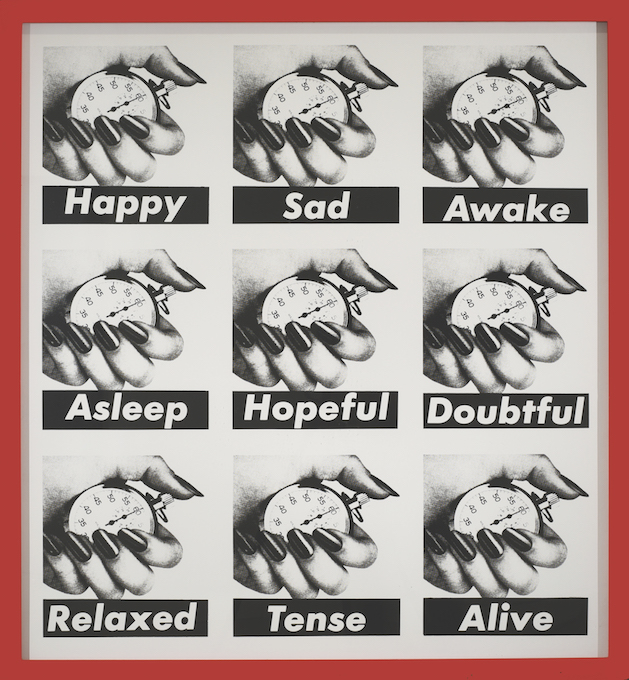
Burger says the OCMA team wants to make visitors feel comfortable to experience both the artwork and their response to it.
“Art can be, for some people, very intimidating. So the lesson, if anything, that we hope to share is that your own ideas are … the core of the experience,” she says. … We have no judgment. We really just encourage you to stop and take a moment to look closer because we are saturated today with thousands of images … [on] social media [and] TV. It’s really bombarding and it can be overwhelming.”
And with instant access to information on our smartphones just a Google search away, sometimes there’s “a level of discomfort if people are not immediately able to get what they consider an answer to their question.” And there may be lots of questions, she says, since contemporary art is often more than beautiful pictures: It can be messy or conceptual and take many different forms.
“The museum … is an incredible, rare space where you can take a moment and look [at the art] for yourself and pause and really value your own reaction to it and connect to it in a very personal way. And if you love it, great. If you hate it, fine. We want to make sure that, whatever your reaction is, … you feel comfortable in the space.”
The OCMA team is also reworking its curriculum for student field trips, talking with school principals and district superintendents to understand what will work best for the children as well as better align with education standards and integrate more social and emotional learning opportunities. Notably, OCMA will also offer free lunches to every student who visits on a field trip, to provide a fuller and more inclusive experience.
But, of course, the museum is not only for students; it’s open to all. “We want people to know that you don’t need to do anything to prepare to come into the museum,” Burger says. “You don’t need to know art movements or wear any particular kind of clothing. … All you need to do is bring yourself and a little curiosity if you like.”
Zuckerman reiterates that the staff really just wants everyone to know they’re welcome.
“It’s not just words, it’s deeds,” she says. “With the free admission, with the window gallery, with all the places to sit, with the idea of this progressive menu [at the plant-forward restaurant]. … Our goal is an intergenerational experience so people can come with the people that they love, however they define that.”
Culinary Creations
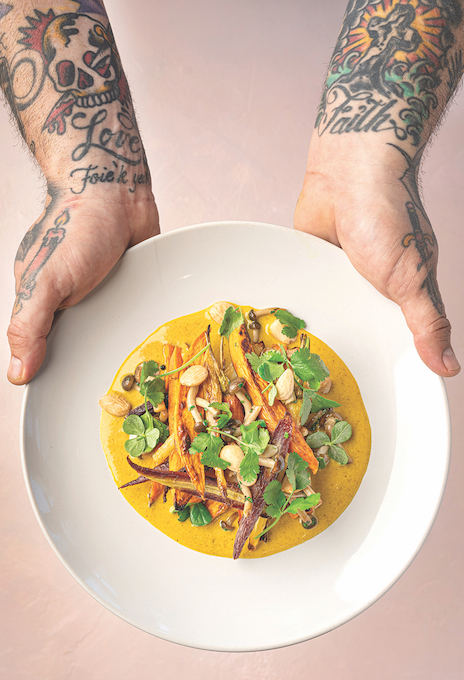
OCMA will not only be home to paintings, photos and sculptures, but culinary creativity, too.
On the building’s upper floor, a plant-forward cafe called Verdant will serve a menu of California cuisine filled with organic, locally sourced ingredients for lunch six days a week (the museum will be closed Mondays).
Verdant and a coffee bar on the museum’s first floor are being developed by Executive Chefs Ross Pangilinan and Nicholas Weber, who are behind new Cal-French bistro Populaire at South Coast Plaza. Pangilinan also owns and operates Terrace by Mix Mix at South Coast Plaza; Mix Mix Kitchen Bar in Santa Ana, which earned a Michelin Bib Gourmand designation in 2019 and is now only open for special pop-ups; and ReMix Kitchen Bar in Long Beach. Weber most recently served as executive chef of 24 Carrots, a top catering company in OC.
Among the dishes on Verdant’s menu are roasted carrots with Thai curry, shimeji mushrooms and coconut. In addition to food service, the cafe will offer gourmet coffee and tea including ceremonial-grade matcha, as well as craft cocktails and a curated wine list at the expansive bar. Both indoor and outdoor seating will be available as the restaurant opens to the rooftop terrace. The dining room will feature a sleek, minimalist design with long, family-style tables and round tops, plus velvet and macrame textiles and hints of greenery from indoor trees and other plants.




